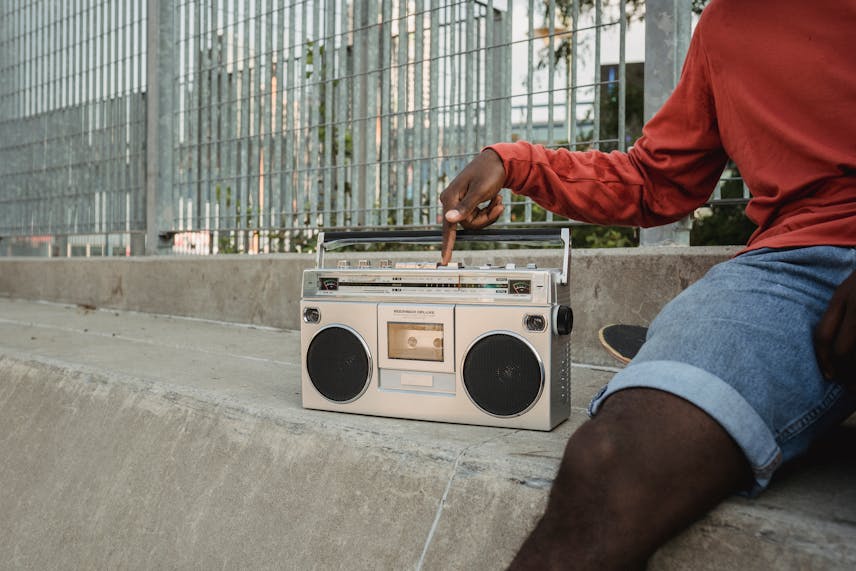When it comes to creating LOFI music, drums play a pivotal role in setting the mood and rhythm of the track. The art of LOFI production hinges on the beat, often characterized by its laid-back groove and vintage feel. In this post, we’ll explore how drums fit into the LOFI genre and how they can be manipulated to achieve that signature sound.
Characteristics of LOFI Drums
LOFI music is known for its warm, crackly, and slightly off-kilter beats. The drums in LOFI tracks are typically composed of sounds that may seem imperfect or low-fidelity — hence the genre’s name. This imperfection is not a flaw but a feature that gives LOFI music its relaxing and nostalgic charm.
Kick Drums: LOFI kick drums are often soft and muted, with a preference for lower frequencies that provide a thump rather than a punch. It’s not uncommon to find kicks that are layered with vinyl crackles or noise to enhance their texture.
Snare Drums: The snare in LOFI music can vary from a tight, vintage pop to a loose, brush-stroked sound. Producers frequently employ techniques like side-chaining to create a pumping effect that allows the snare to cut through the mix.
Hi-Hats and Cymbals: These are typically used sparingly in LOFI. When they do appear, they’re often sampled from old drum machines or jazz records to capture that authentic ‘sampled’ sound. It’s also common for hi-hats to be slightly off the grid to create a looser, more relaxed feel.
Sampling and Sound Selection
One of the most important aspects of crafting LOFI drums is the selection of sounds. Many producers dig through old vinyl records or use samples from vintage drum machines like the Roland TR-808 or TR-909. These samples provide the raw, textured sounds that are synonymous with the genre.
Another popular technique is to degrade the quality of high-definition samples intentionally. This can be achieved by bit-crushing, resampling, or running sounds through tape machines for a warmer, more analog quality. The goal is to achieve a sound that feels like it’s been through a few generations of copying and reproduction — slightly worn but still full of character.
Programming and Beat-Making Techniques
In LOFI music, the drum patterns tend to be simple yet effective. The emphasis is on the feel and groove rather than complex rhythms. Many producers use a technique called ‘swing’ to give their beats a laid-back timing, making them feel more human and less mechanical.
Quantization: While many genres of music rely on strict quantization to keep the timing tight, LOFI often goes the other way. Drums might be slightly off the grid to create a more relaxed and natural feel.
Velocity Variation: Varying the velocity of drum hits can add dynamics and life to a LOFI beat. This variation helps to simulate the inconsistencies of a live drummer, further contributing to the organic feel of the music.
Layering and Texturing: To create depth, producers often layer multiple drum sounds together. A single snare hit, for instance, could be a combination of a live snare, a sampled snare from a vinyl record, and some ambient noise. It’s this layering that gives LOFI drums their rich, textured sound.
Effects and Processing
Effects play a crucial role in shaping the sound of LOFI drums. Commonly used effects include:
Reverb: A touch of reverb can give the drums a sense of space, making them feel like they’re part of a physical environment. However, in LOFI music, reverb is often used sparingly to maintain clarity.
Compression: Compression is used to control the dynamics of the drum hits and to add punch. In LOFI, compression settings might be dialed back to keep the sound soft and unobtrusive.
Lo-Fi Plugins: There are many plugins specifically designed to emulate the sound of old hardware or degraded audio. These can be invaluable tools for quickly achieving the desired LOFI aesthetic.
Ultimately, the key to effective LOFI drum production is experimentation. It’s about playing with imperfections, exploring textures, and embracing the quirks of old equipment and samples. Whether you’re a seasoned producer or just starting out, understanding how to manipulate drums for LOFI music can add a unique flavor to your tracks.


